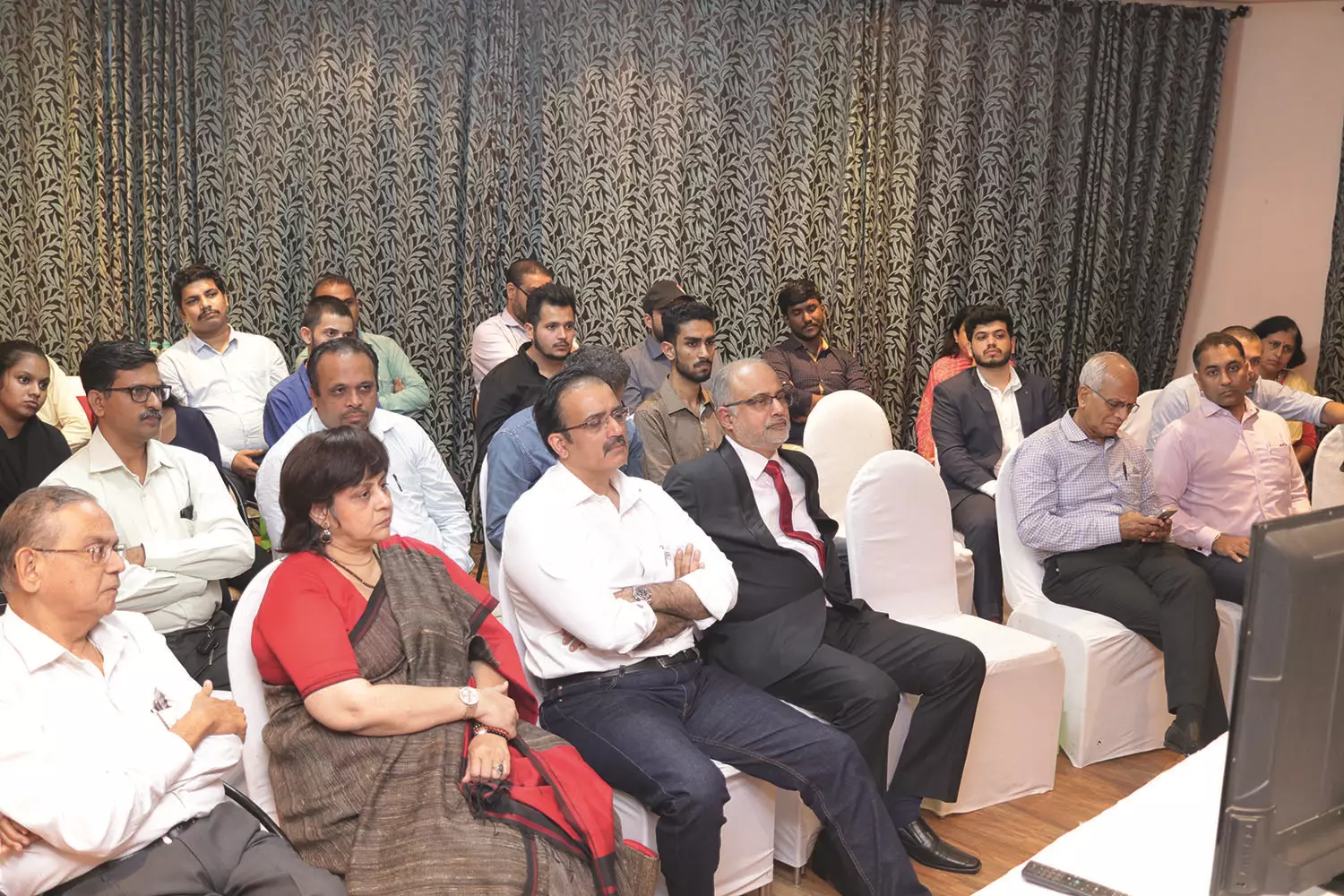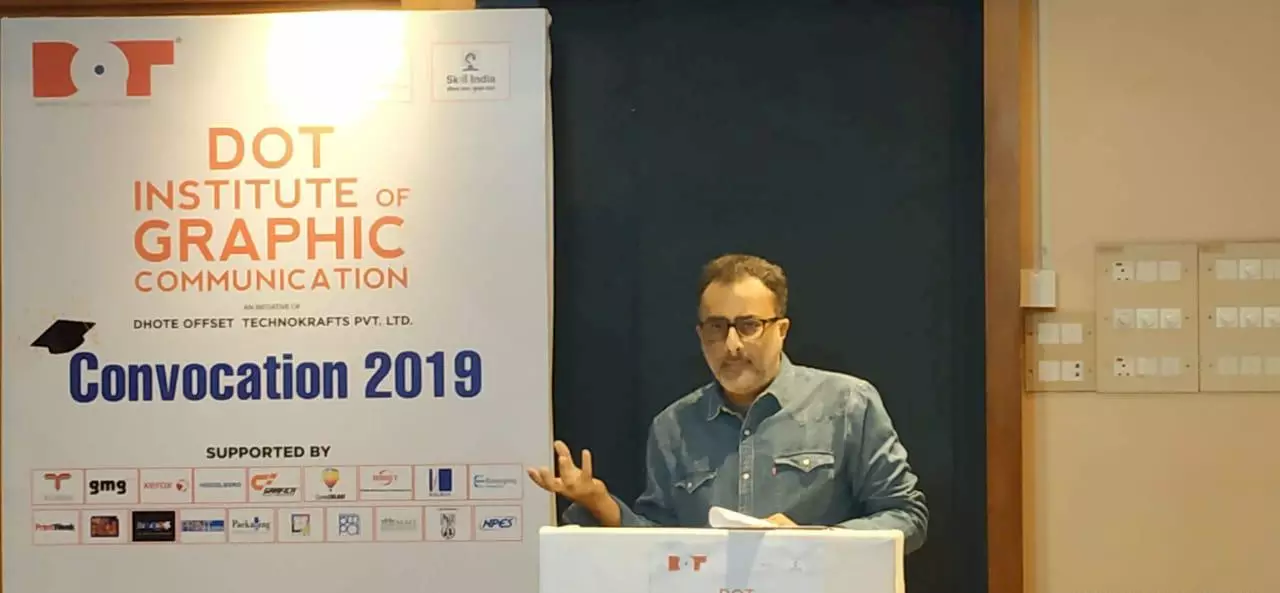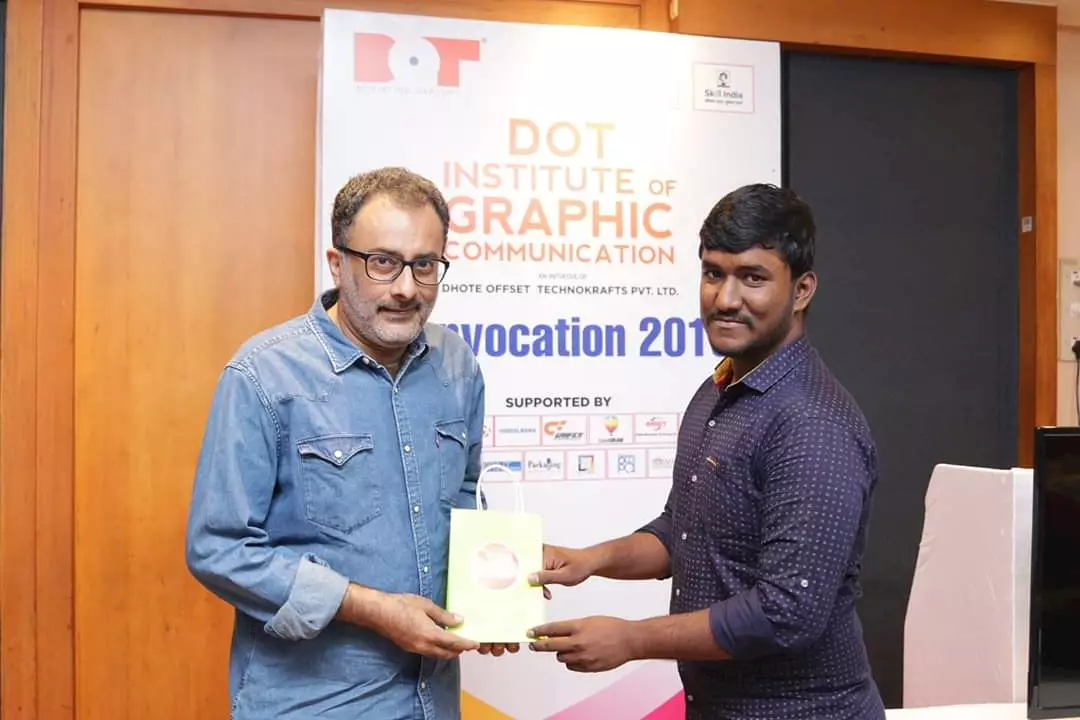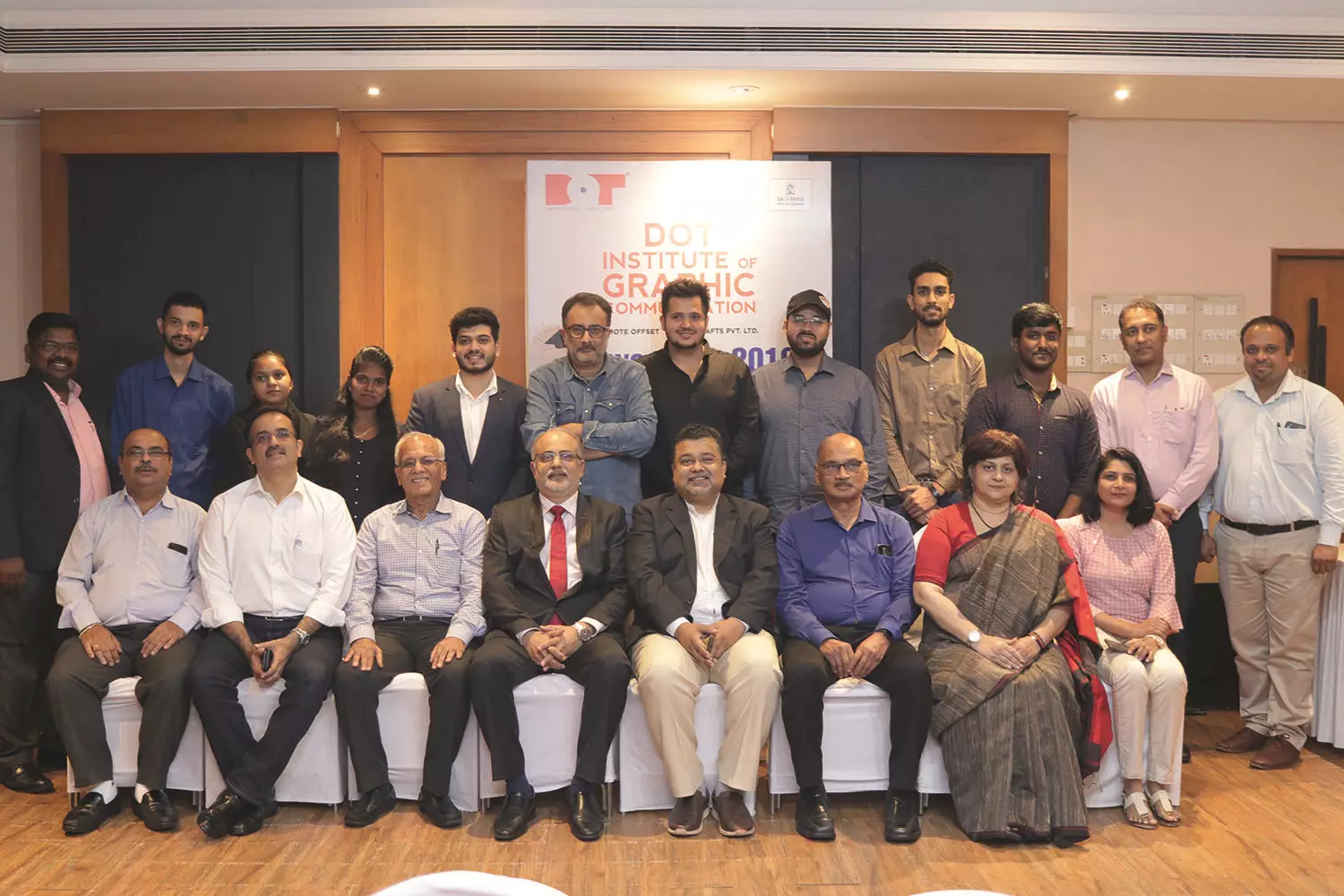Dhotes training program embraces the future– The Noel D'Cunha Sunday Column
DIGC organised an Annual Convocation programme at MIG Club on 10 July, 2019. Three batches of students from Hyderabad, Indore, Jammu, Mumbai, Nagpur and Pune were felicitated by industry leaders which included Tushar and Uday Dhote.
On the occasion, PrintWeek's Ramu Ramanathan delivered a speech in which he said, "The culture of print businesses 10 years ago is very different from what it is now. It is important all of us ask the question, how do you see print and packaging engage with the new generation of print?"
28 Jul 2019 | By Noel D'Cunha
Events like this are scary. You are expected to be an expert and utter all kinds of "expertish things".
11 years ago, at the World Economic Forum in Davos in 2008, they invited an expert. He was a futurologist.
This expert said four things will alter the humanity in the next 15 years.
First, oil at 500 dollars a barrel
Second, that water like oil would be a commodity, and like the LME and SME, there will be a NY Water Exchange and Mumbai Water Exchange.
Third, the inevitability of Africa becoming an economic world power. Something I would like to see. Not to see that continent and its people as a resource for football and lithium which
And fourth, according to this professional prophet, our blue planet shall witness the disappearance of the printed book!
Well, eleven years later, one thing is clear.
The expert was not right and we must distrust people who claim they can predict the future, accurately.
The expert at Davos got all four predictions wrong. But as editor of a print magazine, I am concerned with his fourth prediction.
More than 50% of the 7.7 billion citizens on earth believe the printed book is extinct.
The printed book has got a bad name in our industry.
The book is like a spoon or scissors or hammer or shoe laces or a wheel! Once invented, it cannot be improved! Yes, minor modifications and tweaks (for example, reducing paper wastage from offbeat sizes) are possible. But in the larger scheme of things, the book is the best.
More importantly, we have to counter these nay sayers.

The past 24 months have been steady. Not just steady, top publishers have had 20% growth with printed books. Not just that. Books like, The Art of Thinking Clearly and a Man Called Ove have topped 2,00,000 copies and 1,00,000 copies respectively. These are successes from scratch plus no tailwind from the West, and no controversy, no celebrity.
My point is: all you are starting out into the brave new world. Ensure the messaging (external and internal) is positive. It cannot be defensive or apologetic. Be it: about print, about digital print, about packaging, about Green, about smooth workflow, about women in print.
This is not easy.
All the experts say: Listen to the market!
But the non experts ask: what is the market?
In my view in our industry, the market is equated with trade feedback. Today, one can rely on the ‘market’ for a lot of information and some knowledge, but it can’t be banked upon for insight. In trade publishing particularly, we need to go with one’s own hunches and insight. India is unique among publishing markets, in that 99% of those calling the shots in the book publishing business are not readers.
I am here as an expert; and let try to share some guru gyaan.
Gyaan 1.
Many disruptors in the e-commerce space, as there are disruptors in the commercial space, packaging, wide-format, etc. And the question I have been asking myself is: is the model essentially changing? If yes, are YOU ready? I see, the culture of print businesses 10 years ago (when we started PWI) is very different from what it is now. And so, how do YOU see print and packaging engage with the new generation of print?
For example, the team travelled to the Avery Dennisson i.Lab –R&D plus knowledge centre in Pune. Of course it is a giant stride for labels. But it also opens up possibilities in apparel, pharma, etc automotive parts.
The Avery team shared with me as to how UHF RFID tags have allayed fears about lost baggage - which has always been a major issue for airlines worldwide. The aviation industry has wisely invested in improving its ability to handle passenger luggage and comply with customer demands. Early adopters like Delta Air Lines have seen baggage read rates rise to 99.5% since UHF RFID adoption, while airports like Las Vegas and Newark have reduced mishandling rates by ~15%.

Gyaan 2.
Please look at traditionally slow and sluggish segments? I know it is not offset, but, for example, what is happening in brown box manufacturing. Who are these 125 converters and why are they prospering - and setting up these automatic or semi automatic manufacturing plants? ...
Trend one). Is the packaging model essentially changing? If yes, as an industry are we ready? One gem I heard in Delhi recently was: "In the advertising world, the creatives rule. In management consulting, the suits rule. And in packaging everyone rules because a number of people have tried many things in a different way. Therefore making it work is a lot harder to do. There is no Indian way of doing things. And so, you have to look at the best in Milan or Berlin but adapt it to the smallest towns in Haryana and Jharkhand. For example, a microwave oven option for Farsan!
Trend two). 25 years ago, the threshold of a sizeable flexible packaging converters was 200 tonnes per month. Today, it is 5,000 tonnes. We meet a converter in Hyderabad. It can produce 1800 tonnes of flexible packaging material in a month. The company has converted a major polyester-poly laminate job to a PE-PE structure printed on a W&H. They are promoting replacement of polyester-based jobs. We have already started working in eliminating polyester from the laminate structure wherever end-use applications allow for it, making it recycle-friendly. ... They have BOTH CI Flexo and gravure printing capabilities on the shopfloor ... The battle at the end of the day seems to be: how to get more out of the resins.
Gyaan 3.
Be original ... I met four of the "old timers". Those five-six hours showed me one thing. They were original. I think it is very important. ... Following industry best practices and industry SOPs is worthwhile, but that’s where it stops. These days, I find everyone (uttering the same phrases and mantras. Even today, there are lots of companies doing original things: Moo, Moonpig, Solopress, Printed.com, Helloprint, you’ve got Touchnote doing cool things. In India, we have Bizongo and Bewkoof.
It would be worthwhile for YOU to look at some of the players who are ahead, on the learning curve!
Gyaan 4.
At a time when even industry leaders don't know how to make print more attractive, the industry is struggling to make print and packaging products look more attractive. Therefore many more success stories are required for US team to celebrate (and share with each other). If possible have a simple tracking system (monthly / internal). ... Ten successful companies (this can include: pre media / print management / design bureaus). Ten award winning products (for example, CXOs should be taken for a fun meal to the cool Cardboard cafe at BKC /// Bad made with PVC pipes). Ten innovative processes (almost 50% of the firms, these days).
With the kind of all India talent print and packaging has this will create a huge repository of knowledge. We are not tapping the industry knowledge, enough.
Gyaan 5.
Green Talk. This is not marketing jargon.
I know most SME and MSME print firms are daunted by images of Go Green. Becoming the proud owner of a 26-acre solar panel farm (Lovely) or a rolling wind farm (Malayala Manorama) sounds great in theory, but isn't within everyone’s budgets. Some way to leverage environmentally friendly and energy efficient Smart Kit which is within everyone’s budgets.

Look at simple solutions. try to discover some of them.
Hatch - For the industry as a whole to work on reducing single-use plastics, such as tape, shrinkwrap and bubblewrap
Conservatree - To educate clients, partners, and end users’ suppliers, basically everyone in the chain how best to use plastic
Spectrum Plastics - To put out clear guidelines of what choices customers have got when using plastic. How you go about using it and highlighting choices and benefits of using it. So, you get the right material for your application
A survey of sorts
At WhatPackaging? we conducted a simple and very basic Brand Owner Packaging Study with 50 brand owners across the spectrum, including food, beverage, pet products, healthcare and personal care.
The great news: More than 90% say packaging is important to their brand’s success.
Three interesting inputs: 60% respondents were women; almost 30% were millennials or thereabouts; and one young lady who we met recently was earning a CTC of 28 lakhs
When I heard her pay packet, I was distressed. I felt, this 24 year lady did not deserve it. Then over lunch she describes a typical day in her life.
1. 8.30 am: Reporting to office Always 30 mins prior, just to prepare myself to attend the late evening/ Early morning mails / Calls – to balance different countries timing (US / Korean)
2. 9-9.30 am: First one hour for the REPORTING TEAM for the UPDATIONS / POST MORTEMS – and get the instructions to change the priorities (Status of all the work allotted)
3. 9.30-10 am: Plan for the day priorities (Month start will prepare for the daily working chart) however it will change due to feedbacks)
4. 10-11 am: Technical Work (Mailing, testing, report preparation) – Checklists for each approvals
5. 11-12 pm: Calls & Mails to Factory, Suppliers, Other departments (The communication steps - Calls, WhatsApp, Skype, Mail and finally in person meeting)
6. 12-1 pm: Meeting Suppliers
7. 1.30-2.30: Meeting other departments if the response is delayed or for an urgent need
8. 2.30-3.30: Technical Work (Mailing, Audits and Testing, Report preparation)
9. 3.30-4.30: Calls & Mails to Factory, Suppliers, other departments to remind for the confirmation / reply / response
10. 4.30-5.30: Updation of Day priorities to avoid missing the communication planned for the day

CONCLUSION
The age of print can be divided into three parts.
There is the controlled management era is top down, where quality is controlled with mass production in mind.
Next is the era of continuous and incremental improvement, where the individual - the customer and worker - is the focal point. The approach is bottom up - the Japanese style - where workers get involved. The goal is to satisfy the current customers and to achieve defect reduction. The improvements are based on internal information.
But the internet and globalisation of economies have ushered in the breakthrough management era. If a company has to grow at an accelerated speed, it has to pursue radical business ideas that may even include changing the line of business line or transforming the business to become more innovative and powerful. The idea is to create a consumer segment where it didn't exist earlier. As product life cycles are getting shorter and competition is increasing, Indian companies need a new direction - so breakthrough management is important.
In a globalised business environment, one should think radically and be willing to take risks.
All the best to all of you. I hope to meet you in 2050. When we meet remember to gift me a printed book with both your hands.
Students feted at DIGC Convocation
Tushar Dhote along with Uday Dhote, both directors of Dhote Offset Technokrafts, spoke about "sharpening the skills of print graduates and helping existing family-owned businesses to groom their future generations. In this sense, DIGC provides education to make its students capable managers and entrepreneurs through practical exposure to real-time working of the industry plus the soft skills required to be a manager or CEO. "
DIGC organised an Annual Convocation programme at MIG Club on 10 July, 2019. The convocation was attended by industry leaders which included Aspi Forbes (Jak Printers); Naren Kalapi (TechNova Imaging Systems); Vilas Sangurdekar (All India Federation of Master Printers); Anand Limaye(MMS, MMP, MMPIPTR and MSBTE and IPW), Faheem Agboatwala (BMPA), Mehul Shah (MMS and Onlooker Press); Medha Virkar (MMS, BMPA and Kaleidographics); Tushar Pande (Emerging Graphic); etc.
After the welcome speech and Uday Dhote's DIGC highlights, Naren Kalapi shared an anecdote about what is knowledge in the actual world. As he rightly said through an anecdote, ‘learning never stops and this is just the beginning of learning’. Aspi Forbes spoke about book binding and how book binding needs to supplement print in order to maintain the uniqueness of each and every book. Anand Limaye requested the students to be ever-prepared for the glorious uncertainties of business have always have a Plan B. Meanwhile Faheem Agboatwala stressed upon the importance of innovation and artificial intelligence.

(l-r) Aspi Forbes of Jak Printers with Aaditya Pahuja, student DIGC
The programme concluded with the handing over of certificates to the students who completed their post-graduate diploma in print management by Ramu Ramanathan, Aspi Forbes, Naren Kalapi. This was followed by the conferring of certificates to the students of the short-term specialised courses at the hands of Vilas Sangurdekar, Faheem Agboatwala and Medha Virkar.
The event concluded with the vote of thanks by Lukman Gnanraj, chief coordinator DIGC. He acknowledged Faheem Agboatwala's feedback of "One Book, One Pen, One Child and One Teacher can Change the World". We agree.














 See All
See All